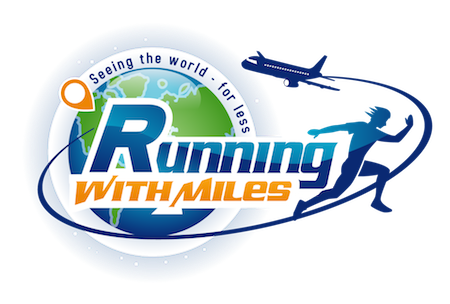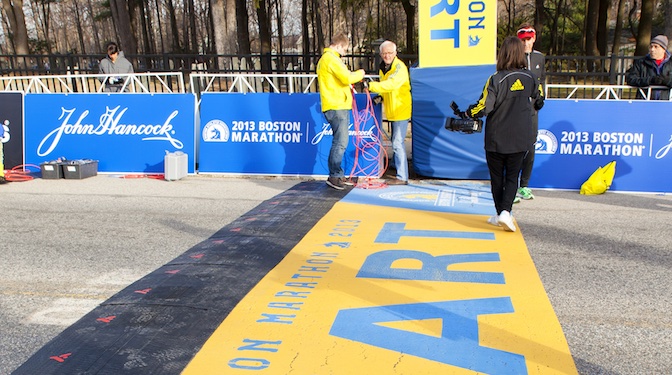I wrote a couple of weeks ago about how I was starting to look for marathons in Europe that might be interesting to run and review and even more interesting to travel to. Using points and miles is really fun for me when I can do something a little different than just taking the single option the award calendar spits out ![]() . I know, I am strange like that!
. I know, I am strange like that!
Anyway, in a quick overview of my marathon challenge, I had realized the Iceland Marathon was in August and that it was on a day that I would be available. The Challenge part came about because I have not run much at all in the last few weeks given our family’s moving plans, travel, and such. For people that know about training for marathons, optimal training schedules are between 16-18 weeks. It is possible to do it on shorter schedules to be sure, but it always helps to have a solid base in place. In my instance, I really do not have much of a base (the longest distance I ran recently was 27 miles on the treadmill back in May). Please note: if you do not have enough miles under your belt, you can hurt yourself starting from nothing and running a marathon on such a short timetable. I realize the potential is there for that, but given the amount of miles I have before that period and my reasonable goal, I feel I have ruled out the possibility of injuring myself to some extent.
So, once I decided to run the Iceland Marathon, I had 40 days until the race. In that time, I have to ramp up my mileage again and find a way to get to Iceland on the cheap from Greece. The challenge consists of:
- 40 days of training
- 40 miles (max) of training per week (to reduce the potential for injury in training)
- 4:00 hours for the marathon (which is about 30 minutes slower than my PR but is a suitable goal considering my lack of training)
- Use miles and points to get to Iceland, stay, and get home with as little cash outlay as possible
Race Prep
This week would classify as my “peak” week – it was just at 40 miles and had my longest long run of the mini training session. It was a difficult week because of scheduling and weather (still very hot and still not getting used to it!). Here are the numbers from the week.
Week 3
- Monday – 7 miles @ 7:55 pace (gym late at night)
- Tuesday – 5.2 miles @ 7:53 pace
- Wednesday – light cross-training
- Thursday – 6 miles @ 8:00 pace
- Saturday – 20.5 miles @ 8:49
- Sunday – 1.5 miles @ 8:00
- Total – 40 miles @ 8:27 pace
Saturday, I started out from the front door of the gym before they opened and went down toward the water. It was a beautiful stretch along the sea for a few miles and then I turned around headed back to be there when they opened so I could be on “MY” treadmill and not be stuck on one of the other nasty machines. It turns out that there are not that many “early” workout people that visit the gym on Saturday mid-morning. It was already getting so humid outside that I had already sweat through my shirt before I began running at the gym (I ran 6 miles outside). I did 12 miles inside and went back out for the last 2.5 miles to round out the long run for the day.
The Importance of the Long Run
Now, I know that many of you that have been running for a while understand the importance of the long run, but I do want to detail a little bit here about why it is so important for marathon training. So many people get confused about the long run, how long it should be, what the pace should be, etc. There is a fair amount of fear and insecurity that comes in when in the heavy peak weeks of marathon training. That fear is that the runner will not be able to run the marathon they want in the time they want, so they treat the long run as a dress-rehearsal when it comes to pace. Not smart!
If you look at any advanced marathon training program, you will find a few of the long runs incorporate marathon-pace miles into the long run. For example, you may have a long-run of 20 miles and a warm-up of 4 miles, 14 miles at marathon goal pace, and 2 miles of cool-down. 14 miles is the max that most programs will have you go at your marathon goal pace. One of the reasons is that your body is really not meant to perform at the goal pace for too long of a distance, due to the muscle fatigue that comes with that for a long run at a fast pace. Remember, these are peak mileage weeks, so you may be running 60 miles that week and 33% of your week’s running is tied up in the long run. The other workouts are tempo, recover, speed, hills, etc. So you are putting your body through a regimented training schedule to prepare for one race. You are trying to push your body to cover the paces when it is fatigued but you are not trying to simulate an entire marathon on those tired legs. The fatigue from that will be too much to overcome by your marathon to run a good race.
The other main reason to run your long runs at a slower pace (typically 10% – 20% slower than goal pace) is that you want to simulate the marathon as far as time on your feet. There is a thought that whatever you can run 22 miles at (time-wise) in training is what you can run the marathon in. That is because your long-run time for 22 miles should be about the length of time as the marathon will take. If you were to run your 18-20 miler at goal pace (or even worse, faster than goal pace), you will be done running with a lot of time between your longest run time and your hopeful marathon time. Example: Say your goal is to run the marathon in 3:30. That is an 8 minute pace. Your long runs should be between 45 seconds and 90 seconds (roughly) slower than that (unless you are running goal paces inside of the long run as discussed above). That means, your long runs should be around the 9 minute mark. So, if you run 20 miles at a 9 minute pace, that means you will do your 20 miler in a time of 3 hours. That is perfect because that gives you an immense boost of endurance for your body in preparation for the marathon. There are many physiological benefits in the long run but to sum it up simply, your body gains much in having the time on the feet as it boosts your endurance systems to handle the time of the marathon. Now, if you were to run that same 20 miler at your goal pace, you would be done in 2 hours and 40 minutes, leaving a discrepancy of 50 minutes between your longest run and your marathon. That is a large amount of time to have to run in a race without ever giving your body the chance to simulate that time and build the proper endurance for it.
I have an incredibly difficult time obeying all of that. 🙂 I know the science behind it and the usefulness of it and I still end up pushing harder than I should. How about you? Are you really disciplined when it comes to the long run or do you also like to push the pace to make yourself feel like you are gaining added benefits?
Less than three weeks to go! I am really looking forward to it and looking forward to getting some good photos of it and videos for you all!








I have learned the same thing about the long run this time around for training. Last time i did a focused program (4 week in between marathons), i attempted to run every run the fastest i can, but i only ran 3 times a week. I did set some good records for my long runs, but ended up flaming out during the Dallas marathon and squeaked in a bit under my normal time of 5 hours.
Time time around, the program (hal higdon) calls for long runs to be at a slow-moderate pace. i pretty much do the slowest i can, but my “slowest” pace has becoming faster. However, i feel pretty good after my long runs. Also, his advanced schedule calls for another four days of continuous running after the long run so if i run the long run too fast, i’ll suffer through next week. Also, his program has enough speed exercises anyway so i don’t feel like i need to do the long runs at a fast pace.